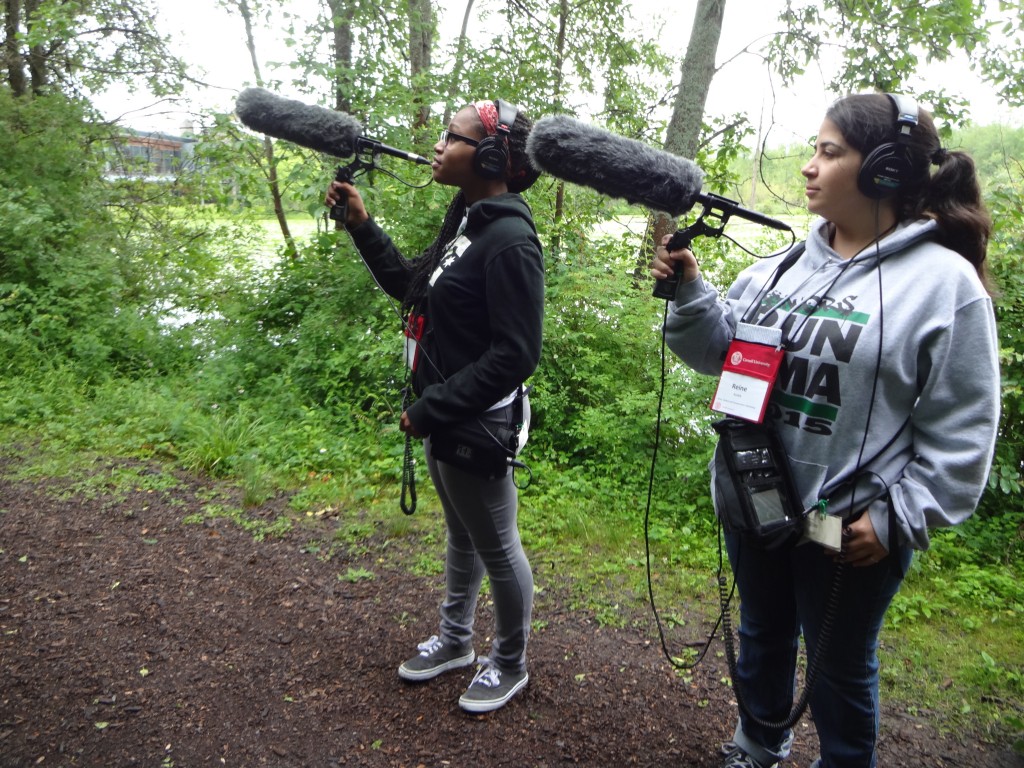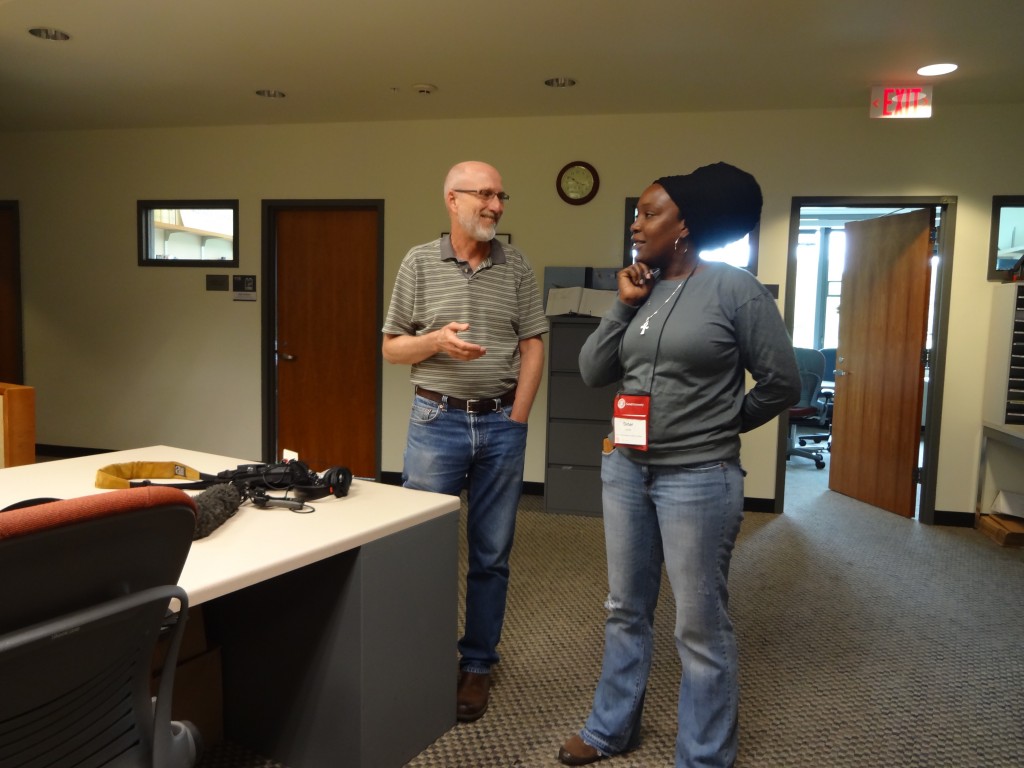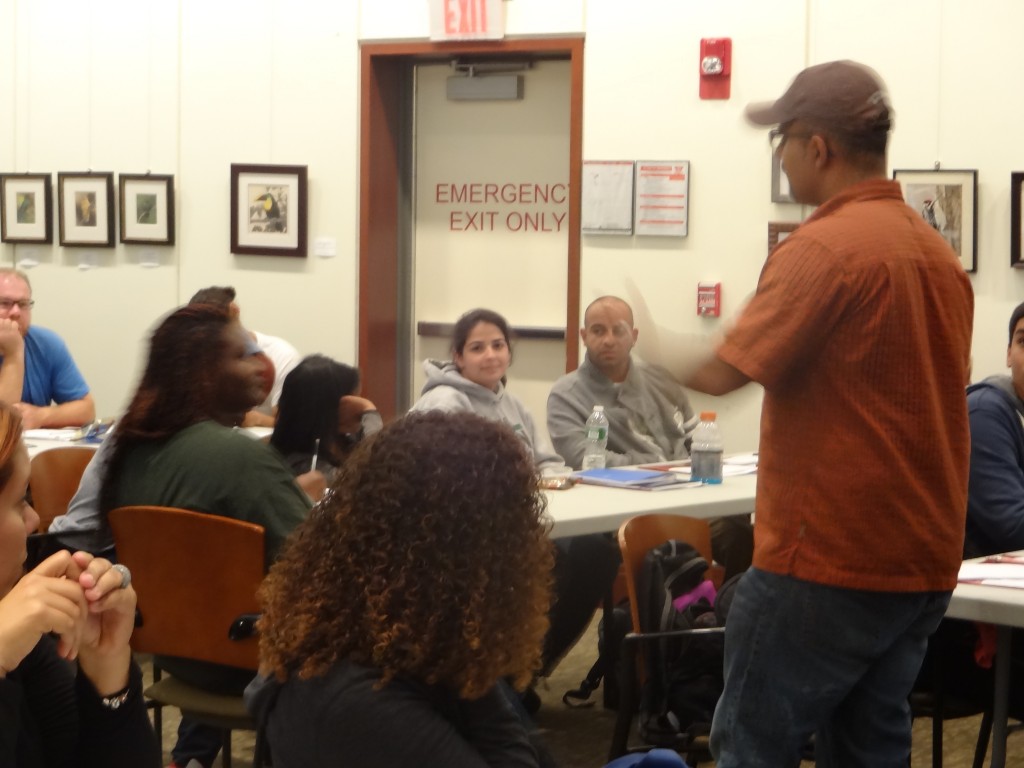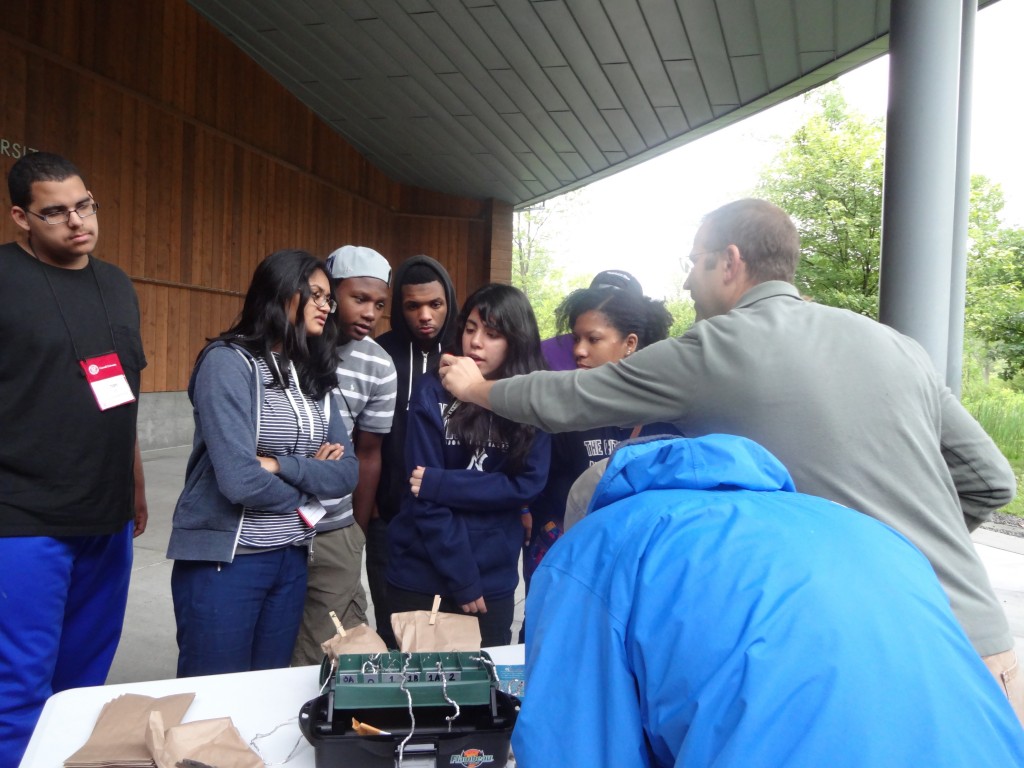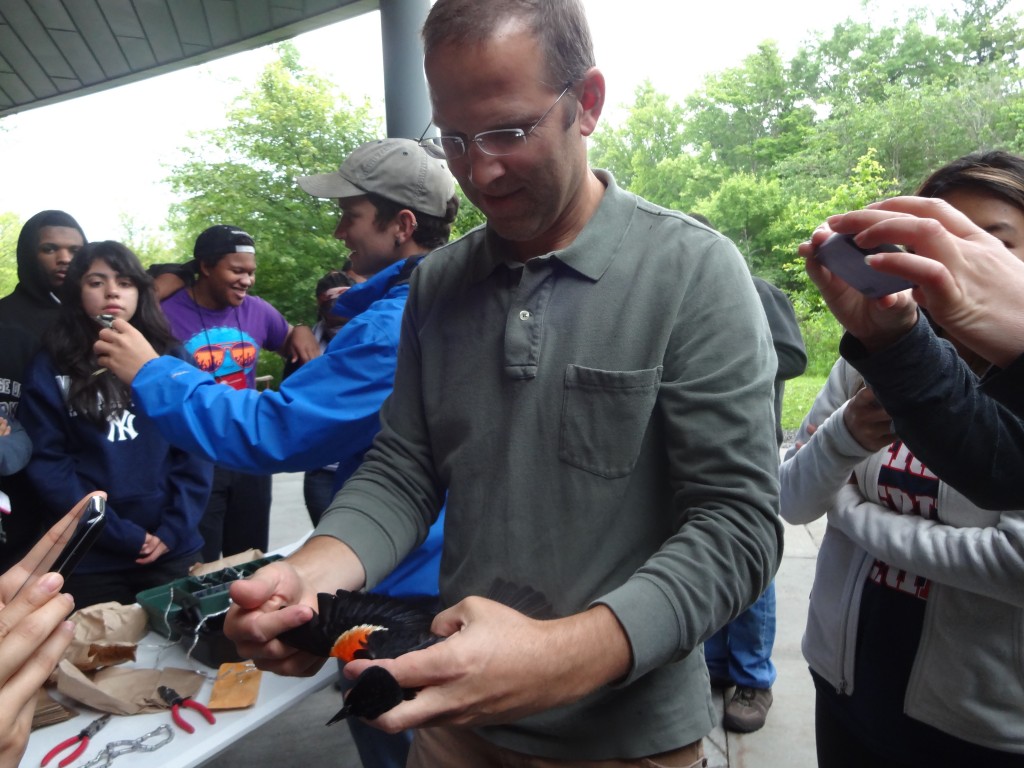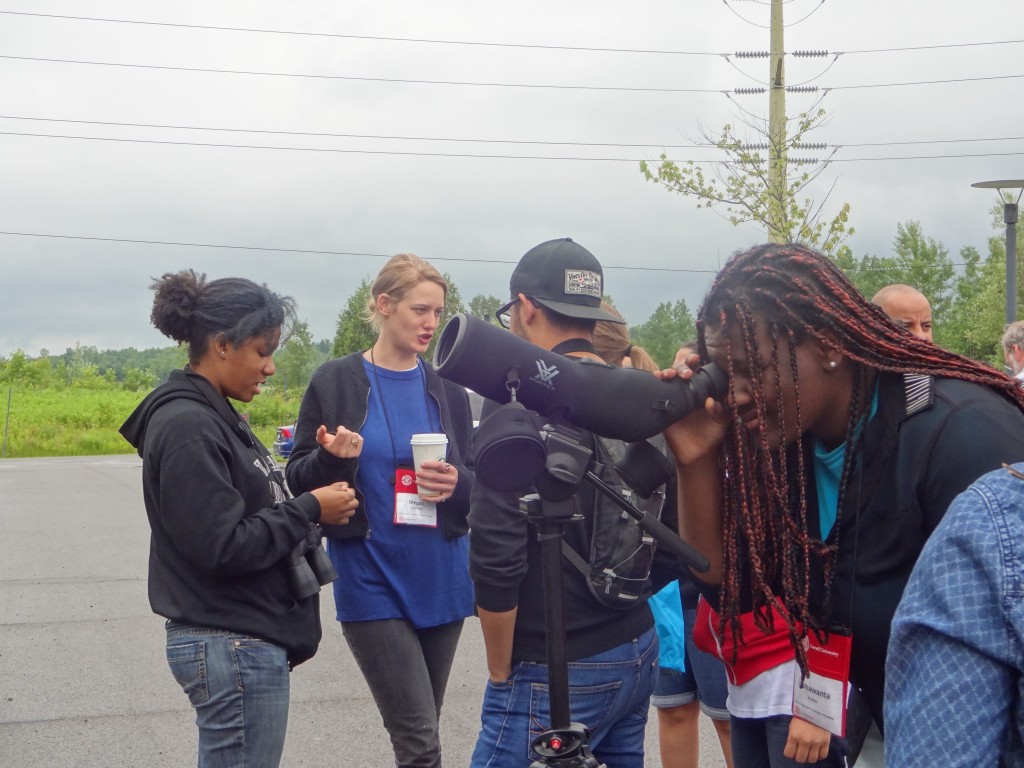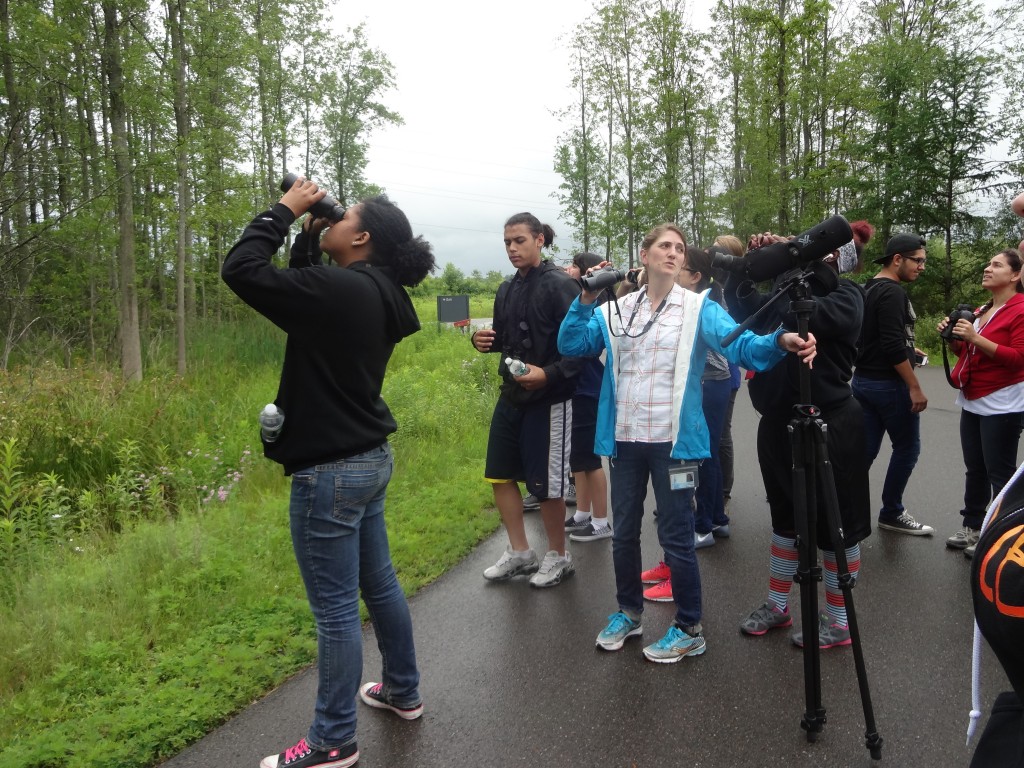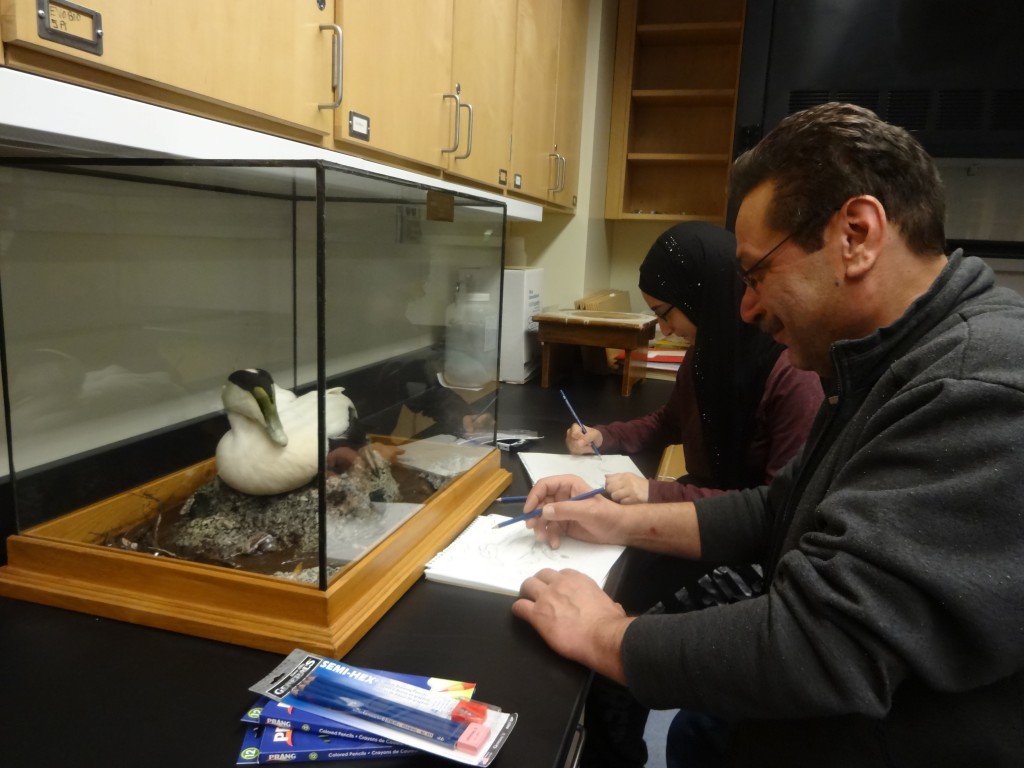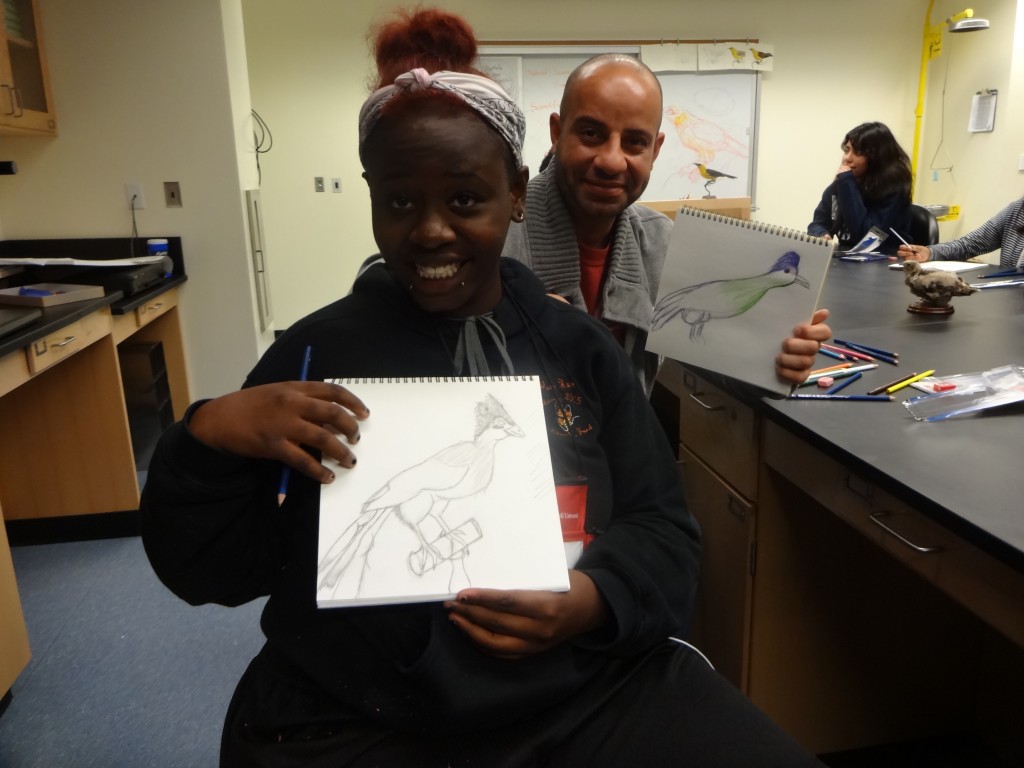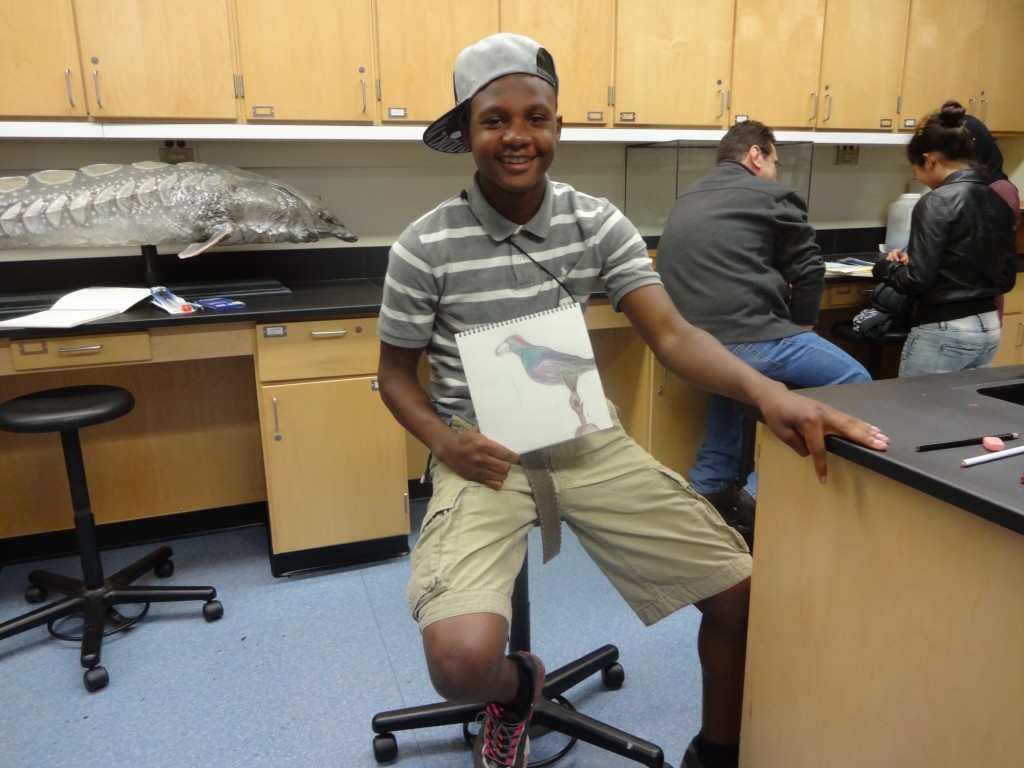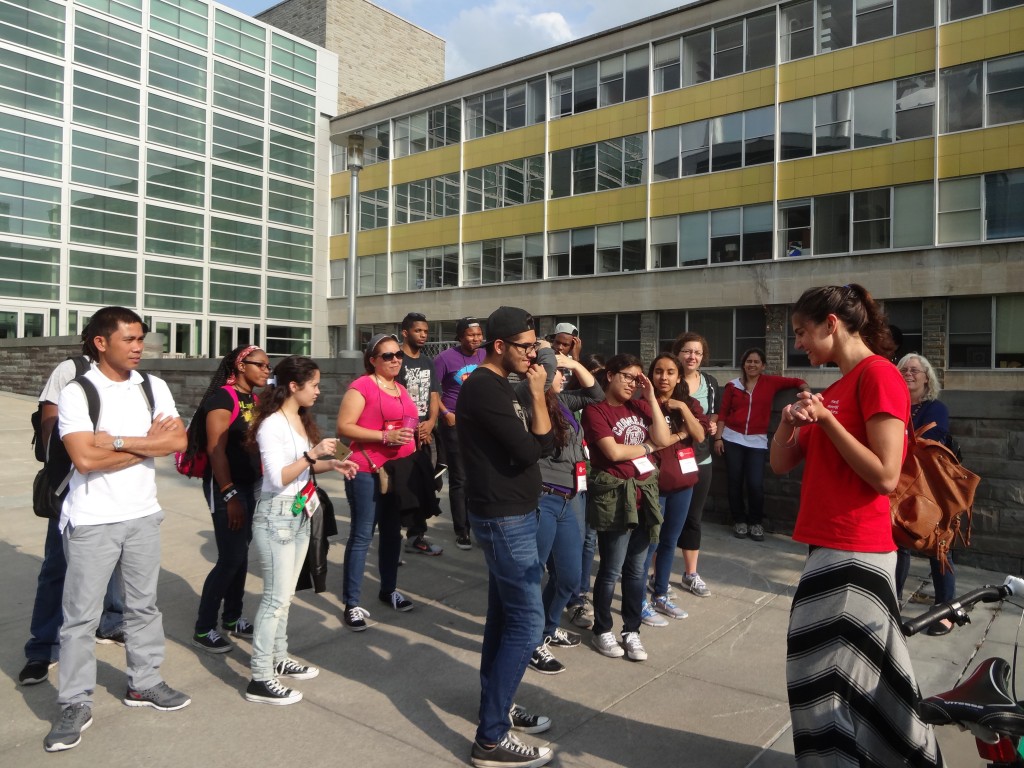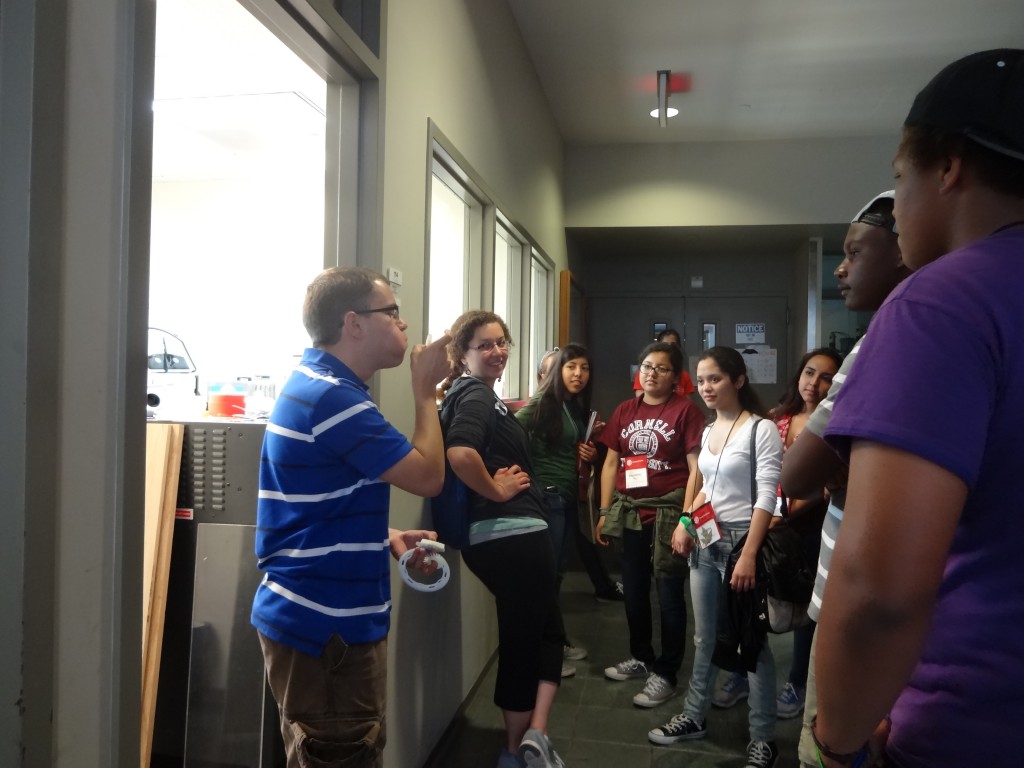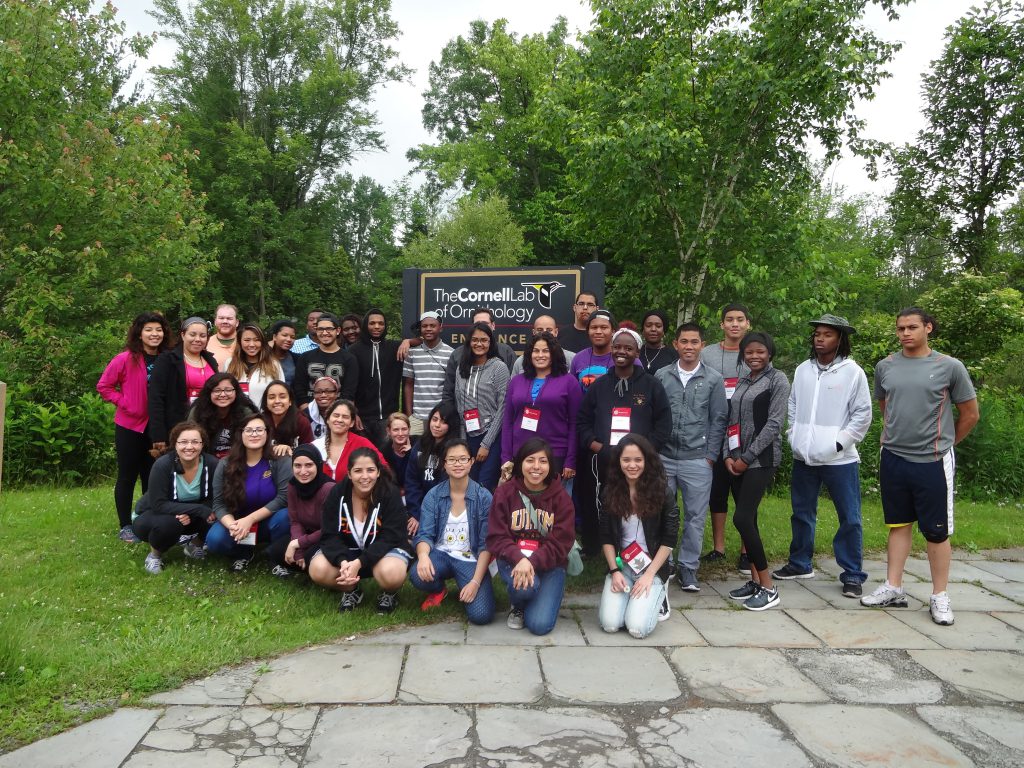
Thanks to funding from the Bobolink and Bratten Foundations, on June 29th and 30th we had a fantastic time hosting twenty-six youth (and their eleven chaperones) from Texas, Florida, California, Puerto Rico, Minnesota, Michigan, Maryland, Washington DC, Rhode Island, and New York, for our Careers and Conservation Workshop here at Sapsucker Woods. The group participated in a diverse and interactive series of activities and presentations.
Participants learned how to use sound recording equipment with Martha Fischer and David McCartt and also learned why it is important to record natural sounds and have the sounds in scientific collections. They recorded local birds and other natural sounds in Sapsucker Woods. Participants also toured Macaulay Library and learned about cutting-edge technology, research, data collection, and analytical methods from staff. In addition, they met Ashik Rahaman, a research analyst in the Lab’s Bioacoustics Research Program who gave a presentation about listening to the oceans.
David Bonter (Assistant Director of Citizen Science) and two students led an interactive bird banding demonstration. Students asked questions about bird banding and learned about why it matters. Students and chaperones were very engaged in this activity and even got to release birds back into the wild.
NestWatch Project staff led students on a walk around Sapsucker Woods Nature Sanctuary to search for bird nests. They learned about breeding biology and habitat. Youth used scopes and binoculars to see local species up close. Students were also introduced to YardMap and learned about habitat creation and technology applications in conservation.
Participants toured the Cornell Museum of Vertebrates with Charles Dardia and were able to see the dozens of specimens of birds, fish, reptiles, amphibians, and mammals. Youth and their chaperones became familiar with some of the preservation techniques used to keep specimens in good condition and saw the effects that years of storage can have on different types of feathers and their coloration.
Some of the other presentations by Lab faculty included “Conservation in the Neotropics and the Significance of Local Community Engagement” by Eduardo Iñigo Elias (Coordinator of the Neotropical Initiative), and “Discovering the Secrets of Elephants” by Peter Wrege, Director of the Elephant Listening Project (ELP).
Students went on a night walk through the Sapsucker Woods Sanctuary trails with Karen and Marta (CUBs Coordinators). They walked through the woods in near-darkness and kept completely silent. Youth were able to experience the sounds and feel of the woods in a way many people never do.
Misaki Ouchida, Bartels Science Illustration Intern, led a drawing activity called “The Power of the Arts in Conservation.” She showed participants how to sketch birds and notice specific details about them.
Participants also took a tour of Cornell, including the Veterinary and the Engineering Schools. They learned about the admissions process and about research opportunities. Natasha Wissmann (junior, College of Engineering), guided the School of Engineering tour, and talked about her experience as a student at Cornell, clubs, academic support, financial aid, and more. Students Maritza Medina (junior, School of Industrial Labor Relations), Braulio Castillo (freshman, College of Arts & Sciences), and Shailee Shah (recently graduated, CALS) spoke about their experiences as undergraduates at Cornell.
Students stayed in a dorm on the campus and ate some of their meals at Cornell dining with undergraduate students!
Overall, the June 2015 Careers and Conservation Workshop was a great success!
All photos on this page were taken by Marta del Campo. Thank you Marta!

